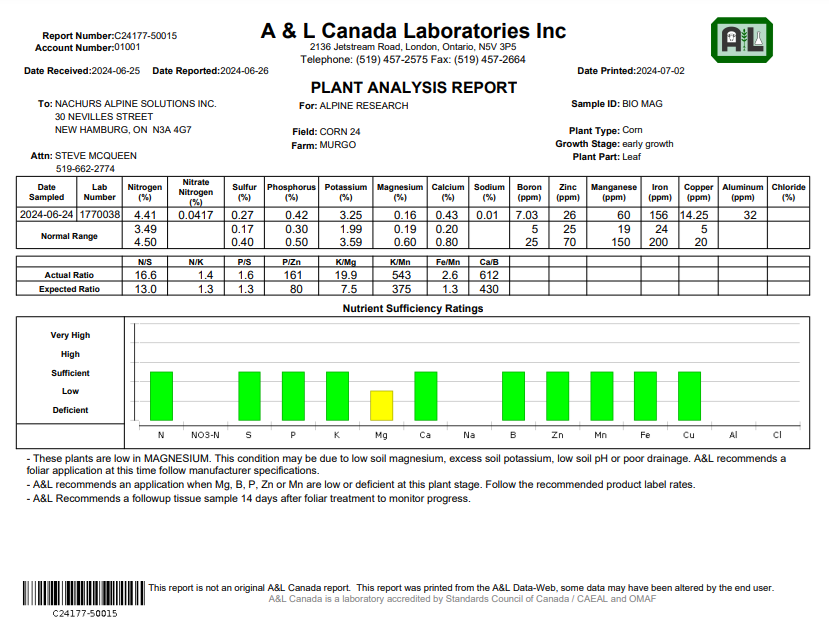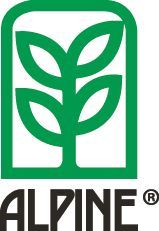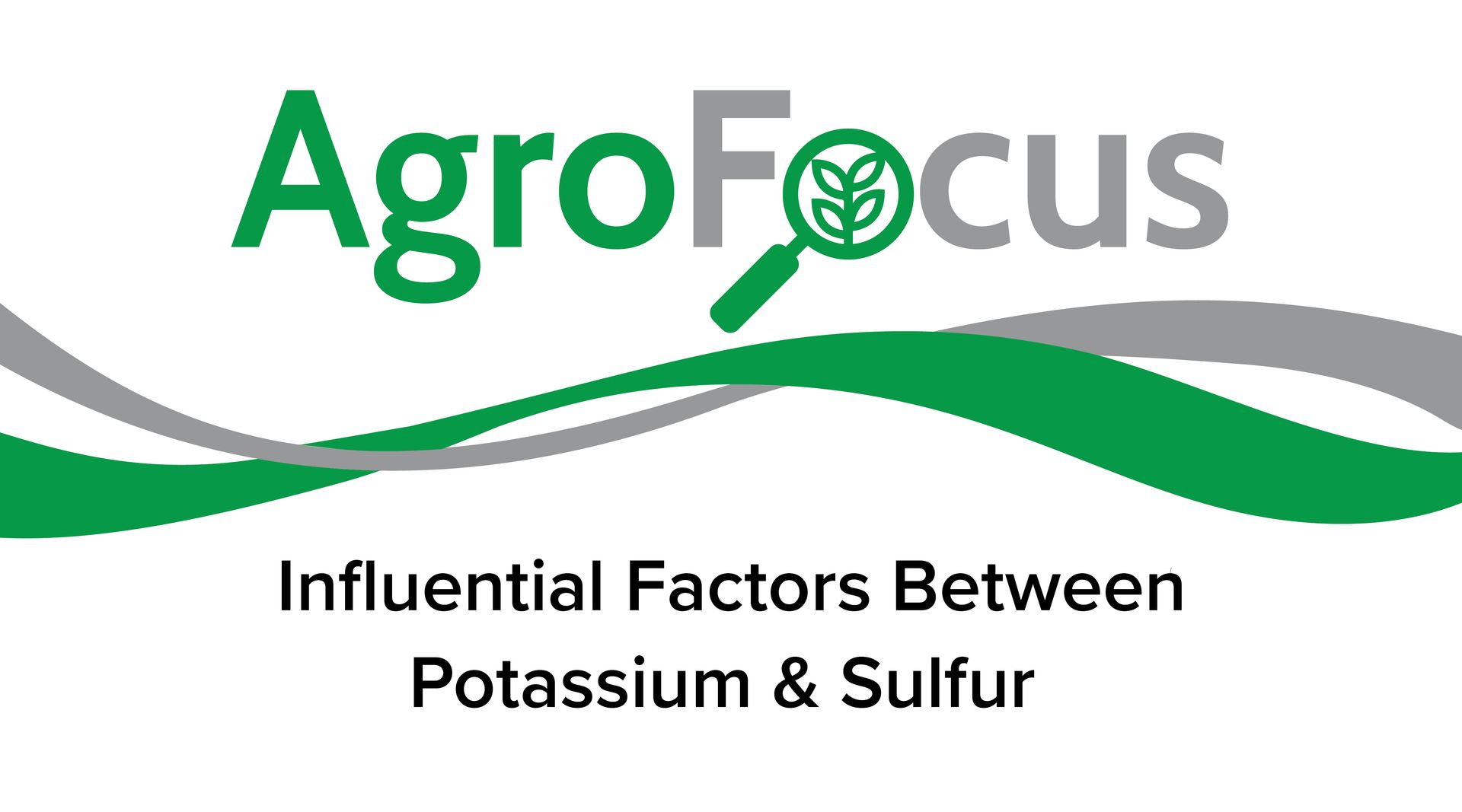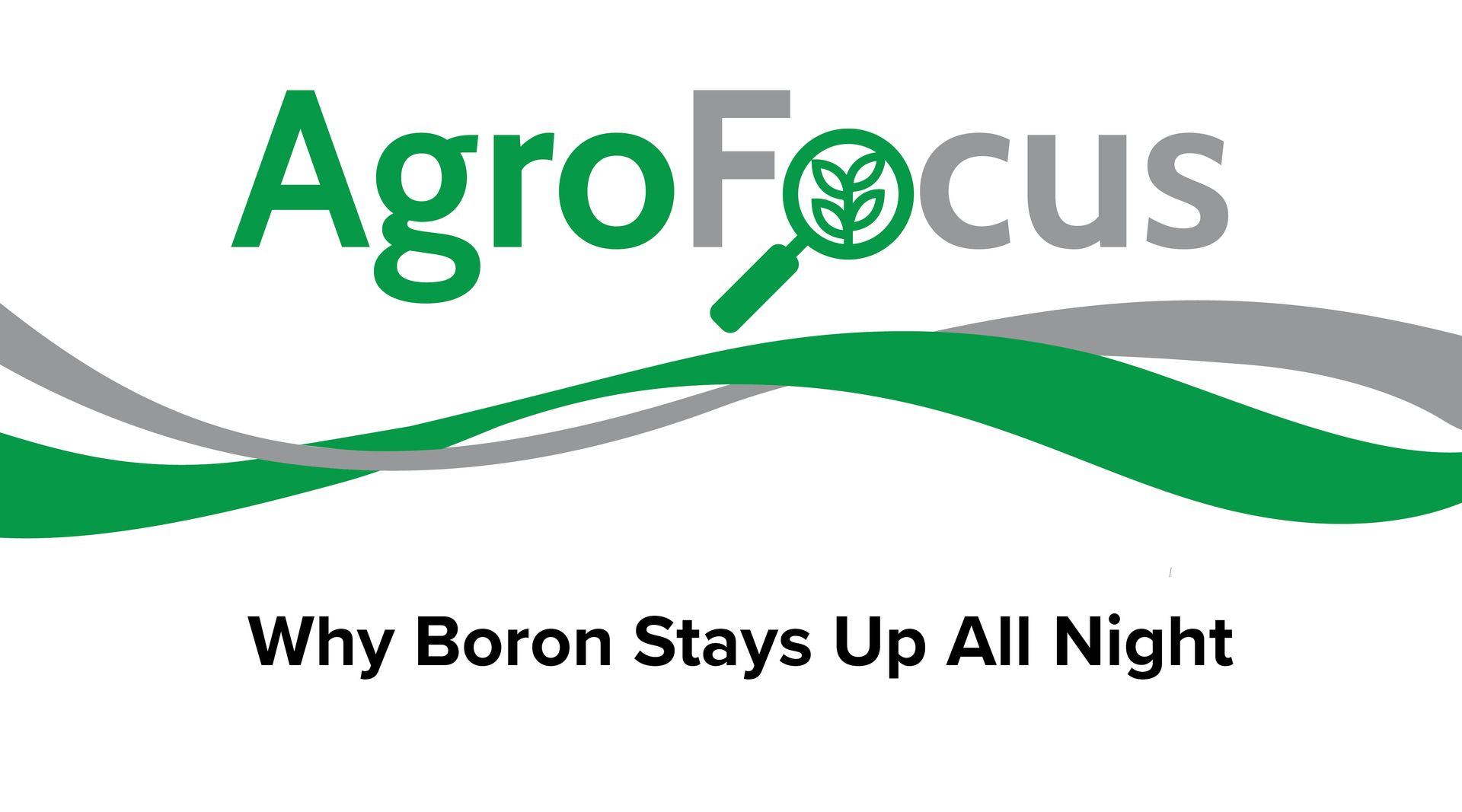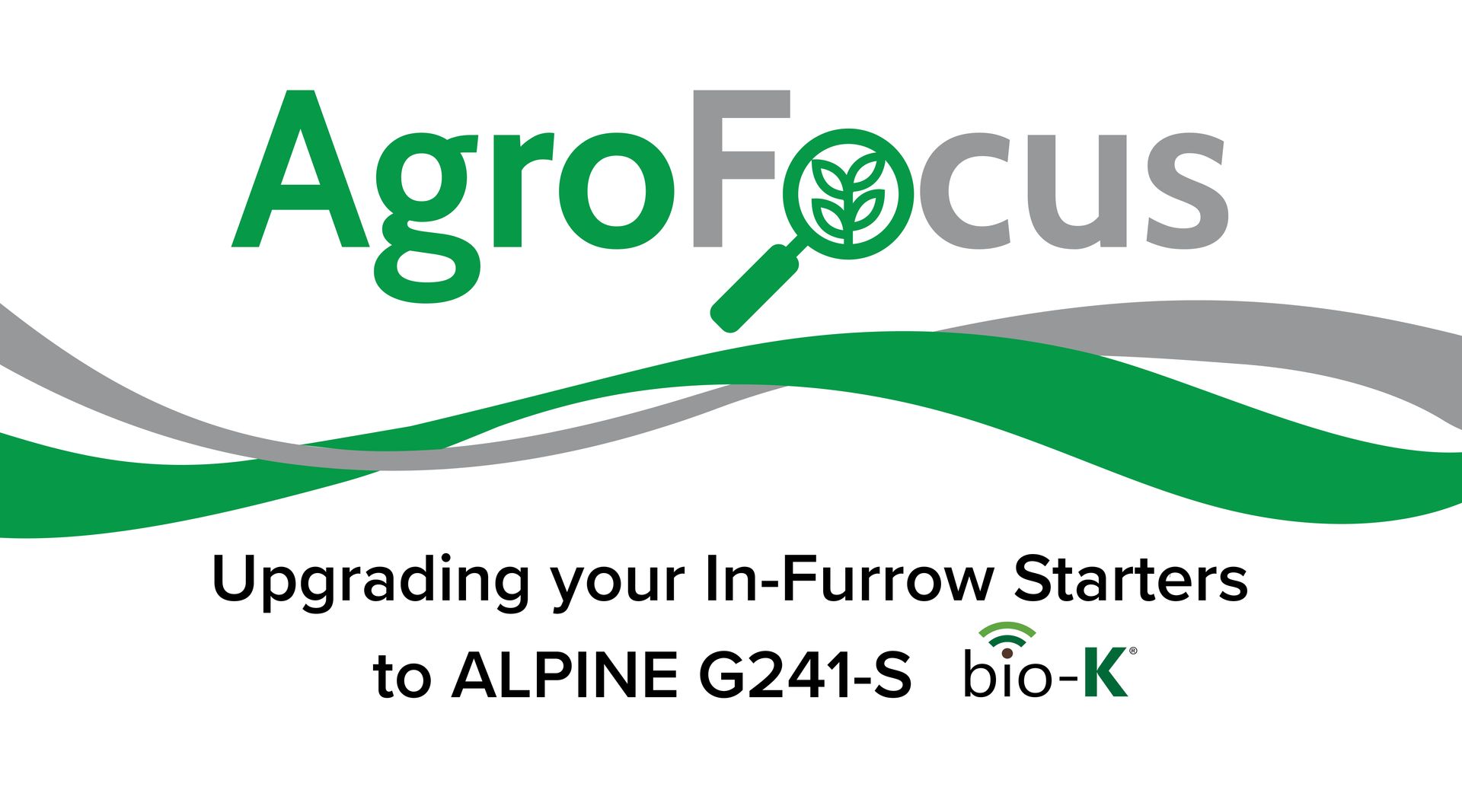The Magnesium Factor
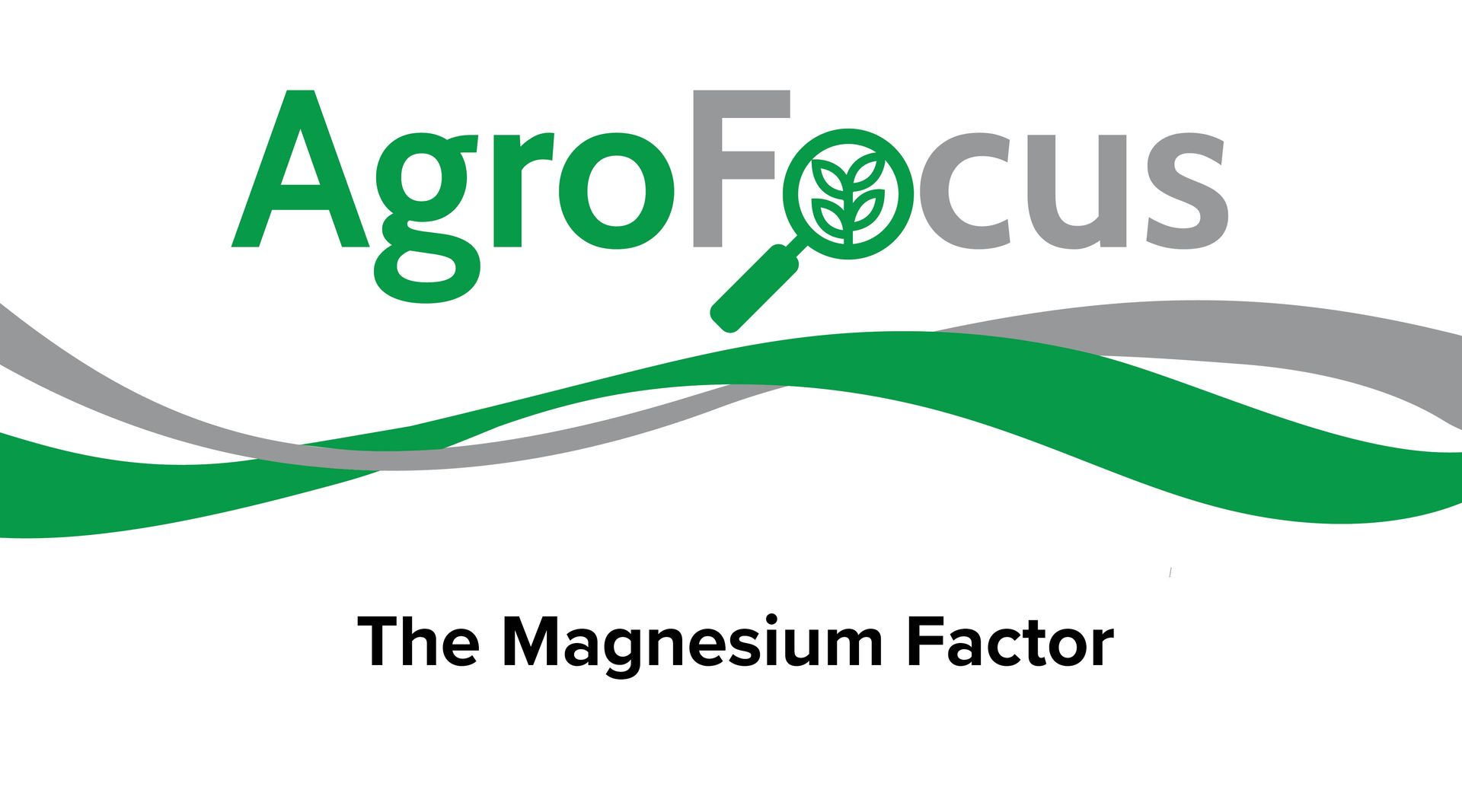
As I travel across Canada, it has been great to see moisture along much of my path. Greener pastures and ditches in Alberta, lush spring wheat, durum, and lentil crops in Saskatchewan, as well as many triticale, grass, and alfalfa fields, are being cut from British Columbia to Nova Scotia. I do not want to forget those potatoes spread across our country along with many specialty crops. As heat and moisture have brought germination, emergence, and vegetation growth, our crop nutrient management remains a key to success as we monitor the “Points of Influence.” Crop scouting, accompanied by tissue or sap samples, supports crop-based crop protection and foliar nutrient applications. As we have been programmed to concentrate on nitrogen, we are putting a lot of pressure on one nutrient to solve many deficiencies and concerns while ignoring the balance of fertility our crops may be looking for. In this blog post, I will not cover all the nutrient requirements but concentrate a little on magnesium, as I refer to what makes plants green.
This spring, a significant amount of discussion surfaced around magnesium, and several growers requested magnesium for their cropping plans. Sometimes, what is new is old; looking back, magnesium has been a big part of many crop plans for decades. In sandy soils, specialty crops, and our high calcitic soils, we are looking to balance our oxygen and moisture space in soil levels. To better understand what we are looking at, I have included a list of what Mg is responsible for as well as soil activity stated:
Magnesium
- Crops require magnesium to capture the sun's energy for growth and production through photosynthesis.
- Magnesium is an essential component of the chlorophyll molecule, with each molecule containing 6.7 percent magnesium.
- Magnesium also acts as a phosphorus carrier in plants.
- Necessary for cell division and protein formation.
- Phosphorus uptake could not occur without magnesium, and vice versa.
- Magnesium is essential for phosphate metabolism, plant respiration, and the activation of several enzyme systems.
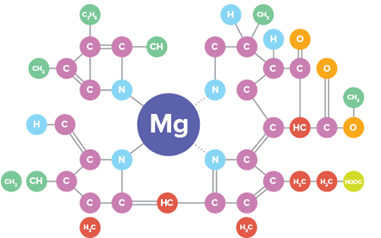
Hidden in the heart of each chlorophyll molecule is an atom of magnesium.
Magnesium in Soils
- As minerals slowly weather, some Mg is made available to plants.
- Magnesium availability to plants is often related to soil pH.
- Research has shown that Mg availability to the plant decreases at low pH values.
- On acid soils with a pH below about 5.8, excessive hydrogen and aluminum can influence Mg availability and plant uptake.
- At high pH values (above 7.4), excessive calcium may have an overriding influence on Mg uptake by plants.
- Sandy soils with low cation exchange capacity have low Mg-supplying power.
- High applications of ammonium and potassium may also interfere with balanced nutrition through competitive ion effects.
The Mosaic Company. (2023, July 5). Secondary Nutrients: Factors Affecting Increase Need For Calcium, Magnesium, and Sulfur. Mosaic Crop Nutrition. https://www.cropnutrition.com/nutrientmanagement/secondarynutrients/#:~:text=High%20applications%20of%20ammonium%20and,and%20Mg%20application%20is%20warranted
After reading this information, it is evident that Mg carries a vital role in plant existence and in achieving our crop goals. The blog title, “The Magnesium Factor,” amazes me how many tissue samples show a magnesium deficiency and how many times it may be ignored due to a misunderstanding of its importance. We also examine product availability, compatibility, and placement issues with our existing programs. To this end, here at ALPINE, we are researching and developing our ALPINE Bio Mag product to go with our existing MicroBolt Mg product. Accompanying your nitrogen applications, whether through conceal, side-dressing, or Y-drop application, along with foliar applications, we strive to increase Mg uptake in your crops, maintaining a healthy nutrient balance. Once we foliar apply magnesium over the next few weeks, we will expand our knowledge even further.
Overall, by continually monitoring and balancing your strategic crop plan, we will continue the quest for the “Pursuit of Efficiency.” To assist you with your pursuit, our Nachurs Alpine Solutions Team looks forward to taking our 50 years of experience to support and expand your horizon as you continue to enhance your 2024 cropping plan.
Please contact your DSM and Dealer network to learn how ALPINE’s Maximize Fertilizer Efficiency can improve your farming experiences today.
Steve McQueen, Agronomy Manager

